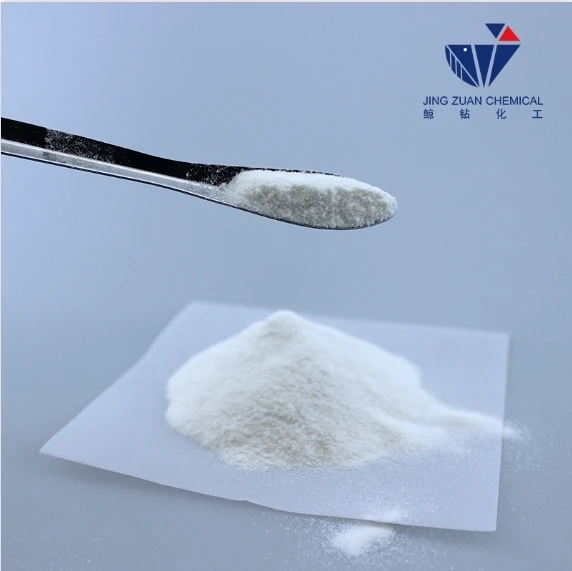
Жов . 22, 2024 00:37 Back to list
The Role of Hydroxyethyl Cellulose in Various Applications and Its CAS Number Significance
Hydroxyethyl Cellulose An Overview
Hydroxyethyl cellulose (HEC) is an important non-ionic water-soluble polymer derived from cellulose, a natural polymer that serves as a structural component in the cell walls of plants. HEC is widely recognized for its versatility and functionality, making it a crucial ingredient in various industrial applications, including adhesives, paints, cosmetics, pharmaceuticals, and food products. The unique properties of HEC, such as its thickening, stabilizing, and emulsifying abilities, make it a valuable substance across multiple sectors.
Chemical Structure and Properties
The chemical formula of hydroxyethyl cellulose can be represented as (C2H4O)n, where ‘n’ signifies the degree of polymerization varying from low to high depending on the source and method of production. The process of creating HEC involves the etherification of cellulose in the presence of ethylene oxide. This modification introduces hydroxyethyl groups into the cellulose backbone, enhancing its solubility in cold water. HEC is available in various grades with differing molecular weights, which can be selected based on the specific requirements of the application.
One of the significant properties of HEC is its ability to form thick, viscous solutions even at low concentrations, which makes it an effective thickener. Moreover, its non-ionic nature means that it is compatible with various ionic surfactants and does not interact adversely with them. This property is particularly useful in cosmetic formulations, where maintaining stability is crucial. Additionally, HEC exhibits excellent adhesive properties, making it an ideal component in woodworking and construction adhesives.
Applications of Hydroxyethyl Cellulose
1. Cosmetics and Personal Care Products HEC is widely used in the formulation of shampoos, conditioners, lotions, and creams. Its thickening properties allow for the creation of smooth and stable products, while its ability to retain moisture enhances the overall effectiveness of skin and hair products.
2. Pharmaceuticals In the pharmaceutical industry, HEC serves as a binder and a thickening agent in various formulations, including gels and ointments. Its biocompatibility and non-toxicity are particularly advantageous for medical applications.
3. Food Industry HEC is often employed as a food additive, functioning as a thickening agent, emulsifier, and stabilizer in sauces, dressings, and dairy products. It helps in maintaining consistency and preventing ingredient separation.
hydroxyethyl cellulose cas number

4. Construction and Building Materials HEC is utilized in cement, mortar, and other building materials to improve workability and adhesion properties. Its effectiveness as a thickening agent ensures a smoother application and aids in preventing sagging during the curing process.
5. Paints and Coatings In the coatings industry, HEC is valued for its ability to enhance the viscosity of paints and coatings, providing improved stability during storage and application.
Environmental Considerations
As a derivative of cellulose, hydroxyethyl cellulose is considered more environmentally friendly compared to synthetic polymers. It is biodegradable and can break down in natural environments, reducing long-term ecological impacts. Furthermore, the sourcing of cellulose from renewable resources like wood or cotton further adds to its sustainability credentials.
Safety and Regulatory Status
Hydroxyethyl cellulose is generally recognized as safe (GRAS) for use in food products by the U.S. Food and Drug Administration (FDA). It has been evaluated by various health organizations and deemed non-toxic for use in cosmetics and pharmaceuticals. However, adherence to quality control standards and proper regulatory compliance is essential to maintain product safety, particularly in sensitive applications.
Conclusion
In conclusion, hydroxyethyl cellulose is a multifaceted polymer that offers numerous advantages across different industries. Its exceptional thickening, stabilizing, and adhesive properties, combined with its environmental friendliness and safety, make it an essential ingredient in modern formulations. As research and technology continue to evolve, the applications and potential of HEC are likely to expand, further solidifying its importance in both industrial and consumer products.
-
Unlocking the Benefits of HPMC Products: A Gateway to Versatile Applications
NewsAug.07,2025
-
Unleashing the Potential of HPMC Ashland: A Comprehensive Look
NewsAug.07,2025
-
Tile Bonding Cellulose: The Key to Superior Adhesion and Durability
NewsAug.07,2025
-
Hydroxypropyl Methylcellulose Powder: The Versatile Component in Modern Pharmaceuticals
NewsAug.07,2025
-
Hydroxyethyl Cellulose: The Versatile Solution for Various Industries
NewsAug.07,2025
-
Hydroxyethyl Cellulose (HEC): The Versatile Polymer for Various Applications
NewsAug.07,2025







